In the world of employer-sponsored benefits, COBRA subsidies have been the hot topic since the American Rescue Plan Act (ARPA) passed in March 2021. Not only does ARPA directly affect people who have lost their jobs since March 2020, but it also has a significant impact on how employers and COBRA administrators are handling the surge in COBRA eligibility over the past year. ARPA has drawn comparisons to the American Recovery and Reinvestment Act (ARRA) of 2009.
ARRA and ARPA: A Closer Look
The two pieces of legislation were enacted as a direct response to a depressed economy, though under different circumstances. Passed in 2009, ARRA was designed to stimulate after the “Great Recession” during which more than 15 million people were unemployed at its peak. In comparison, during the early stages of the COVID-19 pandemic, over 22 million people lost their jobs; as of December 2020, the US still had 10 million fewer jobs than before the pandemic.
In both cases, Congress sought to stimulate the economy, put people back to work, and help those who lost their employer-sponsored group health insurance.
COBRA Subsidy
To help ease the sting of losing healthcare coverage, each bill approved a federal COBRA subsidy for certain qualified individuals. COBRA is generally considered an emergency measure for those who need to continue temporary insurance coverage until they can find another option. COBRA continuation coverage is often cost-prohibitive in that the eligible person pays the full premium (this includes both the employer’s portion and their own) in addition to a 2 percent administration fee.
Both ARRA and ARPA offered COBRA premium assistance for certain qualified individuals. Under ARRA, the COBRA subsidy covered 65 percent of the premium, leaving the Assistance Eligible Individual (AEI) to pay 35 percent. Employers were reimbursed the 65 percent via a federal tax credit. With ARPA, the COBRA subsidy will cover 100 percent of the AEI’s COBRA premium. Like ARRA, employers will cover the cost then use the tax credit for reimbursement.
Under normal circumstances, COBRA is available for people who are covered by an employer’s group health plan and experience a qualifying event (QE). A QE can be job loss, reduction in hours, change in employment status, death of the covered employee, divorce or separation from the covered employee, among other events.
To be eligible for the ARRA subsidy, AEI’s had to have involuntarily lost employment between September 2008 through May 2010. There were few, if any, further qualifications to receive the subsidy.
Requirements to qualify as an AEI for the ARPA subsidy are more complex. Although the reason for employment termination does not have to be COVID-related, the COBRA participant must meet ALL of the following:
- The QE was either Involuntary Termination, or a Reduction in Hours. (None of the other COBRA-qualified QEs are eligible for the ARPA Subsidy.)
- The reduction in hours does not have to have been involuntary for the individual to qualify
- A person whose employment was terminated due to gross misconduct is not eligible for premium assistance
- The QB is not eligible for Medicare or any other medical coverage, either directly or through a spouse, save for excepted benefits such as dental and vision.
- The QB is enrolled in COBRA as of April 1, 2021 or elects COBRA between April 1 and September 30, 2021 under the special enrollment period created by ARPA. (As long as they are still within their 18-month eligibility window, AEIs can elect COBRA during the special enrollment period even if they had previously declined COBRA or elected COBRA and then discontinued coverage or let it lapse.)
Length of Subsidy Coverage
Under ARRA, the COBRA subsidy was available for up to 15 months. Under ARPA, the subsidy is available for a limited 6-month window, from April 1, 2021 through September 30, 2021.
The ARPA premium subsidy could end earlier if:
- AEI becomes eligible for another group health plan, such as a plan sponsored by a new employer or spouse’s employer (does not include excepted benefits, QSEHRA, or health FSA)
- AEI becomes eligible for Medicare
- AEI reaches the end of their maximum COBRA continuation coverage period
Problems for COBRA Administrators
COBRA administration is often outsourced by employers because failure to comply with the complex laws governing COBRA can result in significant financial penalties. As in the case of ARRA, COBRA administrators under ARPA have been placed under a tremendous burden due to myriad issues regarding communications, deadlines, and fee collection, among others.
Challenges posed by ARRA
With ARRA, COBRA administrators and technology providers were dealing with a federal COBRA subsidy for the first time since COBRA was enacted in 1985. Software providers scrambled to update their systems so that Third-Party COBRA Administrators could effectively manage subsidized COBRA coverage.
There was also a lot of confusion on how to apply the subsidy benefit and how to communicate with employers and potential AEIs. This was compounded by the fact that ARRA initially approved the premium subsidy for 9 months, which was later extended to 15 months. It is estimated that about one-third of eligible individuals were either confused by or not even aware of the subsidy.
Another ARRA challenge came from the retroactive application for certain individuals. ARRA was approved in February 2009, and the subsidy started March 1 but applied retroactively to individuals involuntarily terminated from September 1, 2008 through February 16, 2009.
Then there was the subsidy calculation and collection of payment. At a 65 percent subsidy for each qualifying individual, the remaining 35 percent had to be calculated out; in addition, while the employer made the partial 65 percent payment (which would be reimbursed to the employer via tax credit), the administrator had to figure out how to collect the remainder from each covered participant.
Challenges presented by ARPA
While this is the second go-around with COBRA subsidies for software developers and many TPAs, administering ARPA is also proving to be a challenge.
First, there is confusion over communications. The Department of Labor (DOL) and other federal agencies have issued some model notices, though legal experts are still considering how these should be applied. Do you send out new notification letters? Do you send supplements to communications already issued? These questions are still being decided.
Another issue is eligibility and election periods. A person could be eligible for the April 2021 through September 2021 subsidy, even if they had previously declined coverage. For administrators and employers, determining who is eligible and who is not creates a sizeable workload and headache. Added to this is that COBRA eligibility and election rules have been temporarily extended by the DOL’s Employee Benefits Security Administration (EBSA) due to the COVID-19 pandemic. Under EBSA guidelines, the normal 60-day election period for an individual was put on hold for 12 months; it also suspends the premium payment requirements.
For more information on ARPA, visit our ARPA FAQS page.
What was normally a straightforward process has become convoluted for all parties involved. COBRA administrators, software providers, and employers await further clarification from the DOL and other federal agencies. Patience and persistence are key. Subsidies place a tremendous burden on COBRA administrators due to myriad issues regarding communications, deadlines, and fee collection, among others.
Editor’s Note: ARPA allowed a full COBRA subsidy until September 30, 2021 which has now passed. President Biden has announced a strategy called “Path out of the Pandemic” to recover from the financial and economic toll this health issue has created. The administration is also promoting a “Build Back Better” agenda to create jobs, cut taxes and lower costs to continue with economic recovery.
As executive branch, legislative and regulatory efforts continue, it’s important to stay up to date on how these programs may affect employers and employees. Contact your third-party administrator (TPA) or qualified benefits counsel to determine the best direction for your employer plans.
For 40 years, DataPath has been a pivotal force in the employee benefits, financial services, and insurance industries. The company’s flagship DataPath Summit platform offers an integrated solution for managing CDH, HSA, Well-Being, COBRA, and Billing. Through its partnership with Accelergent Growth Solutions, DataPath also offers expert BPO services, automation, outsourced customer service, and award-winning marketing services.

